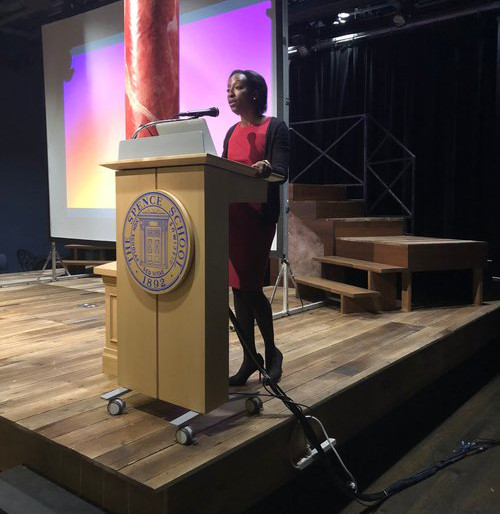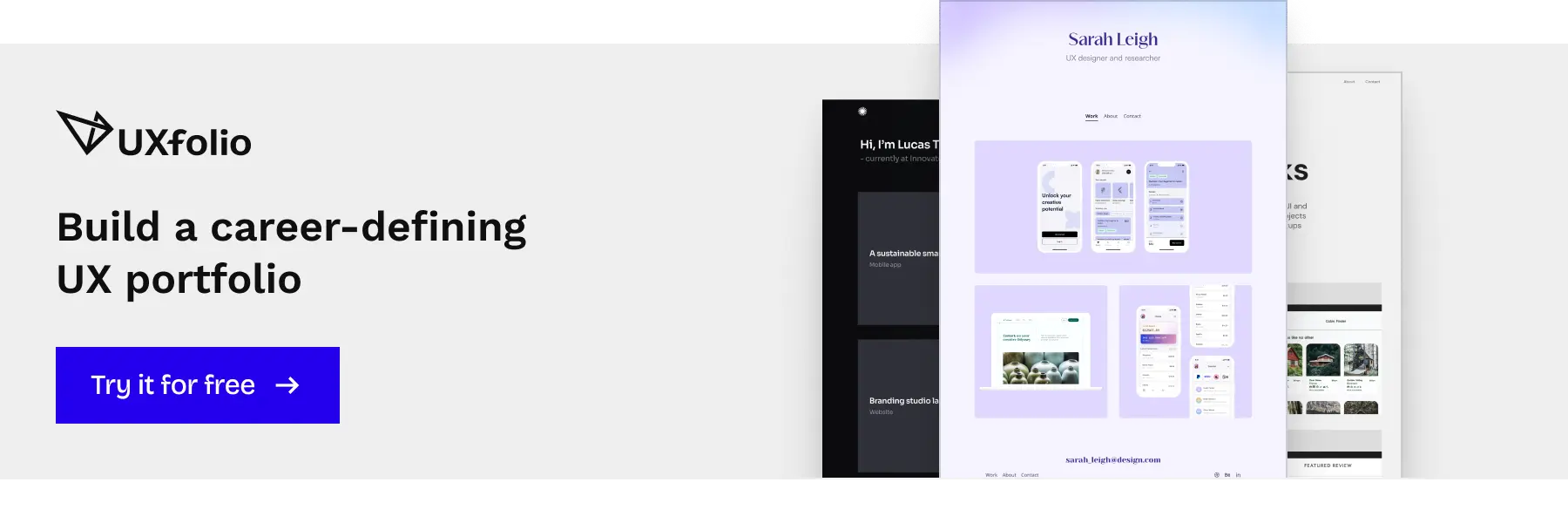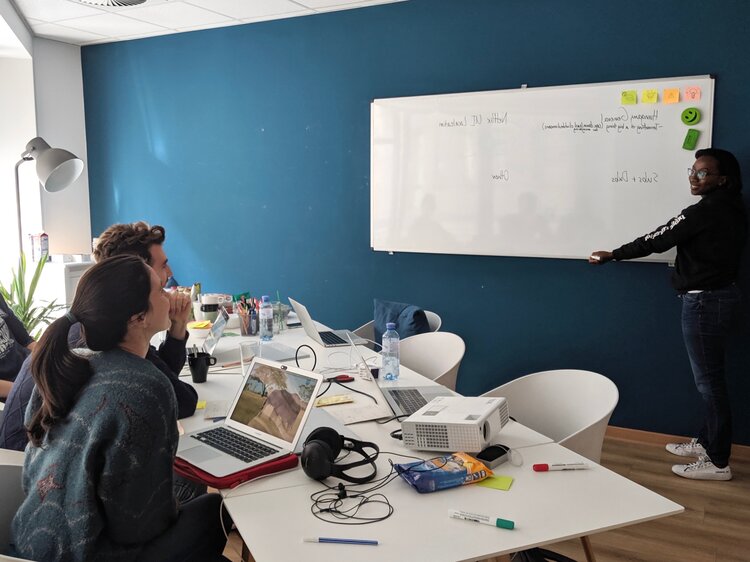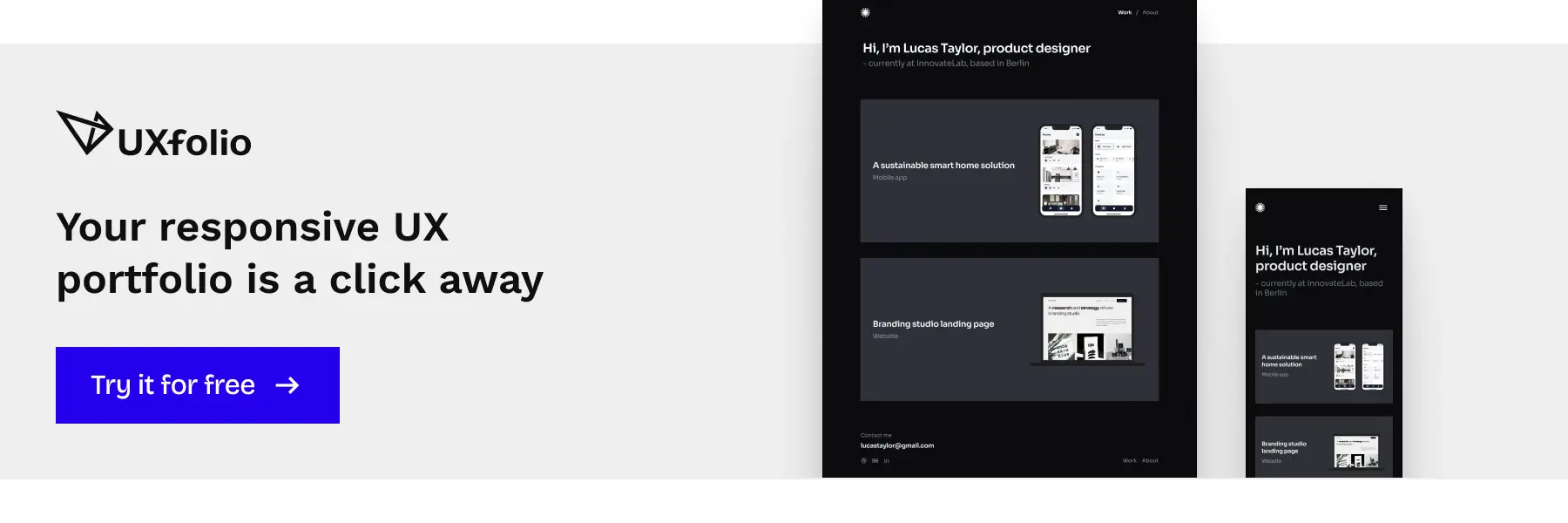Ashlee Edwards began her career at Instagram in 2016 after spending considerable time in academia. Now she is a Senior Product Researcher at Netflix, in charge of the entertainment company’s research efforts for globalization and messaging.
We talked about starting out in research, working for international markets, presenting research findings, as well as the skills, toolsets, and superpowers of a good researcher. If you are not sure about choosing research as your career, read on to see what we talked about. The passion she has for her profession will make you want to become a researcher.
Could you share some details about your career path and milestones? How and why did you start doing UX research?
My research career began when I was an undergrad, working towards my BS in Information Science, a discipline still in its early stages. Information science combines a wide range of fields from information architecture to statistics and design, and it features a strong research component.
As an undergraduate, I participated in one of my professor’s research projects as a research assistant. This involved lots of work around the research through which helped me build experience, such as screening participants or helping with the literature review.
In my senior year, I decided to do an honors thesis, which became my own research project. Working on my own project, with the assistance of an advisor, made me fall in love with research. It was also very eye-opening, as I got to see both the highs and the lows of research. Highs, such as getting good at collecting valuable insights from participants, and lows, like the struggles of recruiting.
My thesis was accepted for publication. At this point, I was really inspired to take it further. So, I decided to pursue a PhD in Information Science, which deepened my knowledge and gave me a thorough understanding of research principles. I was studying things like grounded theory, ethnography, and I did a lot of experimentation with the quantitative as well as the qualitative side of research.

Throughout grad school, I was focusing on search algorithms and on people’s experience in using them. My dissertation focused on physiological signals as predictors of engagement and frustration in a search context to find out if people type furiously out of frustration or because they are progressing in their search process.
Working on my dissertation made me realize that academic research is great, but I would be more fulfilled doing product research. So I moved to California at the end of graduate school and took a course in interaction design, which differed greatly from the world of academia. At the same time, I brushed up my statistics skills in SPSS and R.
Not much later you started working at Instagram. Can you tell us how that came about?
So while I was looking for jobs I started messaging researchers on LinkedIn, asking them if we could meet up for a coffee and an informational interview. I really wanted to learn about what they do in their work, what companies look for in a researcher, and about what skills I should highlight.
I ended up meeting someone from Facebook, who added me to an email list for design and user experience researchers across the country. At that point, I wasn’t sure if I was going to be able to make it in Silicon Valley since I had only academic experience. Shortly after joining the email list, I found a posting for a contract position at Instagram and I applied. They invited me for an interview and ended up hiring me for a full-time position instead. That’s how I started working on Instagram Growth.
Instagram Growth is about expanding into new markets and figuring out how to attract new members. Through my two and a half years at Instagram, I did both qualitative and quantitative research projects, gaining product research experience.
At Instagram, I led close to a dozen international research trips, which allowed me to immerse myself in other cultures, find out more about users, and to learn how can we make our product feel more global.
From Instagram, you went on to work with Netflix.
Yes. At Netflix, so far I’ve worked in two different areas: globalization and messaging. I work to provide research insights to help these teams make product decisions.
Can you tell us what was your process of brushing up your knowledge and skills before starting your search for a job in product research?
I got a lot of advice from people on LinkedIn. Some of them have pointed me towards books by Jakob Nielsen and Jan Chipchase. There are plenty of free books and articles online from UX professionals. I also joined LinkedIn groups and started following professional associations, such as UXPA. This way I learned about others’ experiences and the tools they use. Many people sent me reading lists, which was really helpful. Now, when I receive questions on LinkedIn, I try to answer as many as I can, because I know how helpful it is from personal experience.
In terms of skills, I brushed up my knowledge of qualitative interviewing and sampling for UX.
At Instagram, you presented your findings and insights in a podcast format. Could you tell us more about that? Why did you choose this form?
I had a feeling while presenting to an audience that the findings of the research I had been doing weren’t really sinking in. So I started thinking of ways to make it more immersive. I wanted to find a medium in which the insights are more embedded and can be digested more easily.
In college, I minored in broadcast journalism. There was a point when I thought I was going to be the next Katie Couric. So I had quite some video and audio editing skills, and I thought of it as a good opportunity to put them into use. The podcast format was already out there, people were getting used to it, and it was becoming part of the cultural zeitgeist.
Research is actually perfect for this format as we have the recordings of people’s voices. It was a bit tricky though, as nobody I knew had done it before, so I was going out on a limb. Also, I hate the sound of my own voice, so I had to do multiple takes.
I wrote a script, practiced, recorded it, listened to it, and then changed the script and recorded it again. After four or five rounds of this, I inserted the recordings of the participants, added some ambient noise, and music licensed for free. When I sent it out, I expected my co-workers to hate it.
In the end, my boss was super into it. It got shared outside the product team. It was great to hear people talk about the product and learn about what consumers had to say. After all, it was a great method, though a bit time consuming, so I wouldn’t necessarily use it for every project.

Have you done any similar projects afterward?
I did a couple of other creative sharing projects. One of them was a game you could basically play as a participant to discover their Instagram journey. At a certain point, stakeholders get sick of reading all the reports, so I wanted to do something fun. The more fun we can make it, the better.
In your experience, how can UX research make products more relevant to specific cultures? In what ways do you need to customize your approach?
To customize your approach, you should work to get a sense of the cultural, social, socioeconomic, and historical context of that country. You might need to partner up with a vendor. It might require you having a report done, or going out and gathering those contexts yourself.
Immersing yourself in the culture before you start thinking about how you need to craft your products for a specific market will help in the long run. Getting to know the norms and values will help you create a product that satisfies people in that specific market.
So, gathering context beforehand is critical for me.

Did you ever have the opportunity to do freelance work? In your experience, what are the pros and cons of working as a freelancer compared to working for a big company?
I did one freelance project in the six month period between moving to California and before starting to work for Instagram. In my opinion, there is just so much more support at a larger organization. For example, there is usually an established process for recruiting research participants, which can be critical. Also, at large corporations, there is usually a clear-cut goal or metric to follow. Everything is marching towards that same goal.
When you are freelancing, you have to be more creative when it comes to finding solutions. This also means more creative control in terms of research. Compared to projects at larger corporations, a freelance project is usually more open-ended, often allowing you to dig a little deeper.
I’d say that there are merits and drawbacks to both, so I would recommend doing a little bit of both if you can. Since they are so different, it is good for you as a researcher to try your skills out in both environments.
What skills do you think UX researchers need when starting out?
Whether you are quant or qual, a major skill would be methodological rigor. By rigor, I mean knowing the basic principles of the track you choose. It is also important to have a point of view based on which you can make and back up your decisions.
It is okay if you don’t have the experience yet. Just make sure that you have some literature and resources to back up the decisions you make.
To give you a more concrete example, let’s say if you are a qualitative researcher, you should have a point of view on how to make your participants feel comfortable, how to make them open up to you. Also, you should be aware of the point when you have interviewed enough people, and reached theoretical saturation.
It is okay if you don’t have the experience yet. Just make sure that you have some literature and resources to back up the decisions you make.
Once you reach success, what skills or soft skills do you think are important to remain successful?
Communication is definitely one of the big ones. Maintaining open, transparent, and frequent lines of communication with stakeholders and partners. If you think you’re over-communicating, you’re probably doing the right level of communication with stakeholders.
The second one would be an organization, especially if you are working with a lot of transcripts or a lot of data. Keep your briefs and your communication organized.
Lastly, I think flexibility is also necessary because sometimes we researchers become rigid about the way we plan our work. It is good to observe other researchers and tweak your own method. Expand your skillset, because it keeps you at the top of your game. Make sure you are growing personally as well as professionally.
If you think you’re over-communicating, you’re probably doing the right level of communication with stakeholders.
Do you recognize any trends and shifts in UX research methodology?
I’m noticing a trend towards companies investing in international research much more heavily to gain a global perspective. Gaining international expertise and knowledge of other markets can make you invaluable as a researcher.
Another pattern I see is a bigger emphasis on design thinking and product strategy. As researchers, we are more involved in setting the basic principles for a product, and the strategy we choose to market that product. I see the different roles of researchers blending together and moving towards product strategy.
I should add that I’m fairly new to this field, so I hesitate to say that anything is a trend because it might have been already going on.
What is your opinion on the overall approach to UX research in the professional world? Which areas or attitudes could benefit from improvements?
I think research should be involved earlier in the process. Sometimes, research is deployed towards the end of the product cycle, when the product is already done. So it becomes a question of evaluation, “what people think about it”. I think we, as researchers, are pushing to be part of strategy, but we need the product world to embrace us and give us a seat to be able to define and shape a product.
In your opinion what makes up a good UX researcher portfolio and case study?
A good UX researcher portfolio is one that shows a command of different questions: both tactical and strategic. This shows that you can develop a research plan that addresses both areas as in product research, as you will be asked to cover both.
A good UX research portfolio should demonstrate your knowledge of the methods and the tools you use to complete research. Also, you should include a case study that will show you know how to take a business problem and translate it into research questions.

On your personal page, you state “I design studies using a variety of tools such as interviews, focus groups, surveys, and log data to produce improvements in product design and implementation.” Do you think it is important for researchers to have a clear-cut toolset or is it better to present as a jack of all trades?
I really think that it is good to have one superpower as a researcher. Of course, you should have some knowledge of quite a few methods, but there should be the one you know through and through, and you can be considered an expert on. That is how you can differentiate yourself from other players in the field. Having command of a particular method or tool makes your work special. For me, that was survey development and Qualtrics. That’s my bread and butter that has followed me from grad school to Instagram, and now to Netflix. If you tell me “I need this survey in Qualtrics, to find the answer to this question” I can run with it. So I think is very useful to be a specialist in one specific area.
What draws you to survey design?
A question can be a very powerful tool. It is important to get the wording right and to make it clear and balanced, as it can unlock so many useful insights. I want to make sure that I’m getting those questions right. This makes survey design really attractive to me: I enjoy crafting surveys that are easy for folks to take. I don’t think it is a very cool or sexy answer, but there is nothing like a beautifully designed, well-worded, and balanced survey question.
A question can be a very powerful tool. It is important to get the wording right and to make it clear and balanced, as it can unlock so many useful insights.
Is there anything else you would like to add?
I think we need more researchers from non-traditional backgrounds. Even if you are not from a field like anthropology, psychology, or other fields that have research baked into them, you have a very fresh and valuable perspective. So if you are considering pursuing a UX career, but you think you don’t have the right type of background, you are exactly the person we’re looking for, because you are bringing totally different lens. And that is what we need to make the field and our products better and stronger. So I would encourage anyone who’s thinking about research as a career to go for it and try it out because we need more people with a diverse set of backgrounds.
Build a researcher portfolio easily with UXfolio!
If you want to build a portfolio with detailed case studies quickly and easily, try UXfolio! Our tool will help you to build an eye-catching home page that contains all the information recruiters need.
UXfolio helps with case studies too! You can choose from research-related sections, such as interviews, surveys, customer journeys, and more. Start building your portfolio for free at UXfolio!